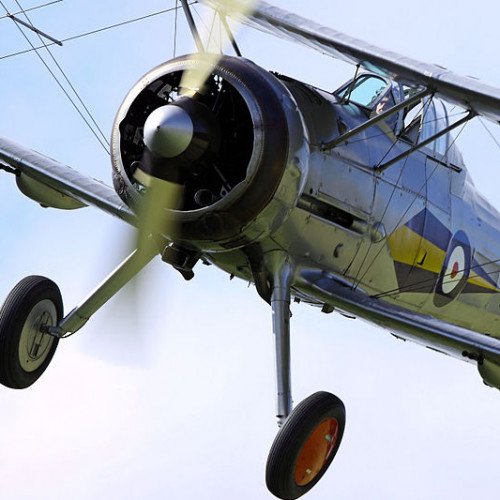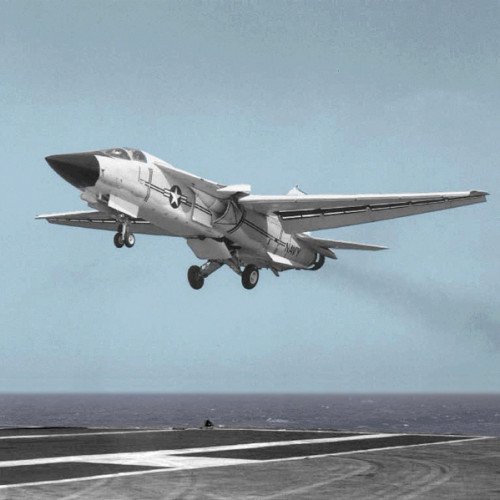Gloster Gladiator vs General Dynamics–Grumman F-111B

Gloster Gladiator
The Gloster Gladiator was a British-built biplane fighter. It was used by the Royal Air Force (RAF) and the Fleet Air Arm (FAA) (as the Sea Gladiator variant) and was exported to a number of other air forces during the late 1930s. Developed privately as the Gloster SS.37, it was the RAF's last biplane fighter aircraft and was rendered obsolete by newer monoplane designs even as it was being introduced. Though often pitted against more formidable foes during the early days of the Second World War, it acquitted itself reasonably well in combat. The Gladiator saw action in almost all theatres during the Second World War, with a large number of air forces, some of them on the Axis side. The RAF used it in France, Norway, Greece, the defence of Malta, the Middle East, and the brief Anglo-Iraqi War (during which the Royal Iraqi Air Force was similarly equipped). Other countries deploying the Gladiator included China against Japan, beginning in 1938; Finland (along with Swedish volunteers) against the Soviet Union in the Winter War and the Continuation War; Sweden as a neutral non-combatant (although Swedish volunteers fought for Finland against USSR as stated above); and Norway, Belgium, and Greece resisting Axis invasion of their respective lands. The South African pilot Marmaduke "Pat" Pattle was the top Gladiator ace with 15 victories with the type.
Statistics for this Xoptio

General Dynamics–Grumman F-111B
The General Dynamics/Grumman F-111B is a long-range carrier-based interceptor aircraft that was planned to be a follow-on to the F-4 Phantom II for the United States Navy (USN). The F-111B was developed in the 1960s by General Dynamics in conjunction with Grumman for the U.S. Navy as part of the joint Tactical Fighter Experimental (TFX) with the United States Air Force (USAF) to produce a common fighter for the services that could perform a variety of missions. It incorporated innovations such as variable-geometry wings, afterburning turbofan engines, and a long-range radar and missile weapons system. Designed in parallel with the F-111 "Aardvark", which was adopted by the Air Force as a strike aircraft, the F-111B suffered development issues and changing Navy requirements for an aircraft with maneuverability for dogfighting. The F-111B was not ordered into production and the F-111B prototypes were used for testing before being retired. The F-111B would be replaced by the smaller and lighter Grumman F-14 Tomcat, which carried over the engines, AWG-9/Phoenix weapons system, and similar swing-wing configuration.